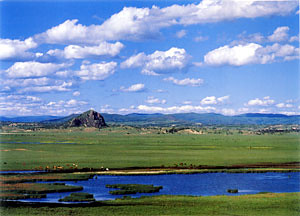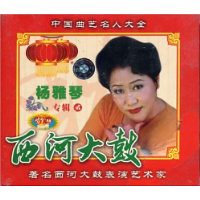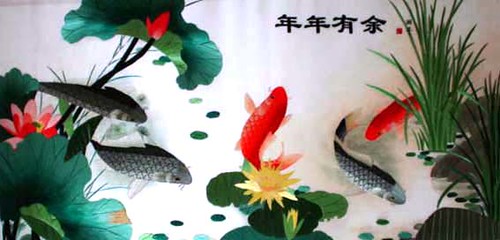| Home > Living in China > Places of interest |
Chengde Summer Resort
 |
Chengde Summer Resort, also called Chengde Out Palace or Rehe Xanadu, is situated north of Hebei Province's Chengde downtown, 230 kilometers away from Beijing. First built in the 42nd year (1703) of Emperor Kangxi's reign of the Qing Dynasty, the resort cost about 90 years to construct, covering 564 hectares. It is the largest imperial garden in China.
The resort is divided into two sections: the palace area and the scenic area, the latter of which is subcategorized into Lake Zone, Plain Zone and Mountain Zone.
Palace Area
Palaces in China conjure up pictures of majesty and splendor. Certainly most palaces are just like that, but for sure you will have a different view if you come to visit the palace in the Chengde Summer Resort. The architectural style of the palace is very unique, and similar to the residential houses in North China. Black bricks and gray tiles, rock steps and the cute courtyard covered with old pine trees look peaceful and elegant.
 |
The area is located in the southern part of the resort, made up of the Main Palace, Pine-Crane Hall, Pine Soughing Valley and East Palace. The Main Palace is comprised of the Front Court and the Back Imperial Bedroom. The main hall of the Front Court, all made of nanmu, was the place where all important ceremonies were held during the Qing emperors' stay in the summer resort. The Back Imperial Bedroom is comprised of Yanbo Zhishuang Hall, where the emperors lived and dealt with state affairs, and Yunshan Shengdi Tower, where the emperors and empresses appreciated the beautiful scenery.
Scenic Area
1. Lake Zone
Lying in the north of the palace area, the scenery of the lake zone sparkles like a diamond in the Summer Resort. In the middle of the lake zone are three islands, namely, Happy Island, Island for Enjoying the Water Songs under the Moonlight, and Green Surrounded Island.
The Green Surrounded Island is where the princes studied. The Happy Island boasts the most ancient architectures, such as the Yanxun Mansion, where the emperors used to deal with state affairs before the construction of the Main Palace. To the north of the Happy Island lies Green Lotus Island, with the Misty Rain Pavilion. The zone is divided into several lakes including the Half-Moon Lake, Mirror Lake, Silver Lake and Inner Lake, around which are the main scenic areas. The Wenjin Loft was one of the seven famous libraries in the Qing Dynasty. The Island for Enjoying the Water Songs under the Moonlight was where the emperors enjoyed reading as well as moonlight and water songs.
Weeping willows crooning along the banks and green waves poppling on the lake make up a wonderful picture.
2. Plain Zone
Going north, you come to the plain zone where the Qing emperors held banquets and recreational activities. This area is mainly covered with grassland and woods. The plain zone is divided into three parts: an arboretum to the east with 28 various Mongolia tents; to the west is a piece of grassland where you can ride horses, and temples and other buildings lie to the north.
3. Mountain Zone
It is located in the northwestern part of the Resort and accounts for four fifths of the total area. There are four great valleys from north to south: Pine-cloud Valley, Pear Valley, Pine Valley and Filbert Valley. Here you can enjoy the mountain scenery completely, including undulating hills, flourishing woods, steep peaks, gurgling streams and white waterfalls. It is pleasantly cool here, a best place to spend the summer holidays. Architectures in this zone, adopting the styles both of the Southland and of North China, are of great artistic value.
Each year in the summer, the Qing emperors would come and live in the Chengde Summer Resort for about five to six months. Nowadays, once summer starts, most people think of the Resort to spend their vacations.
Art
 more
moreChinese Traditional Art---- Xihe
Famous Star of Xihe Dagu---Yangyaqin Xihe

The Romance of butterfly lovers

Introduction to Suzhou Embroidery
Suzhou embroidery-one of China's four famous embrodiery styles, has a

Customs
 more
more



 print
print  email
email  Favorite
Favorite  Transtlate
Transtlate 
